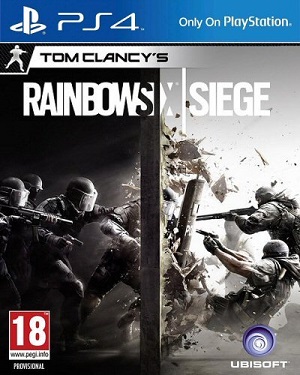
Ubisoft’s Rainbow Six: Siege has a very interesting back-story to it, which usually seems to be the case for most of its games these days. It didn’t quite start out as Rainbow Six: Patriots but it emerged in the wake of the single-player experience to be the multiplayer-focused title that we know today. Rainbow Six: Siege is one of the few Ubisoft titles in this day and age to take advantage of AnvilNext 2.0, the company’s proprietary game engine that was introduced with Assassin’s Creed: Unity and has only ever been seen in Syndicate (along with the upcoming For Honor).
AnvilNext has seen a number of changes throughout the years with AnvilNext 2.0 effectively owing for structures to be generated and adjusted as necessary. The support for physically based rendering allowed for light to reach with objects and surfaces in different ways, thus leading to more realistic visuals overall. In tandem with global illumination support and improved physics, leading to objects in the environment behaving more realistically, gives an overall better visual fidelity.
In the case of Rainbow Six: Siege, AnvilNext 2.0’s capability and range for real-time destruction really comes into play. Nearly every surface in the game is capable of being destroyed – you can blow holes through floors, ceilings and walls, and they react realistically to any damage inflicted on them. You can knock holes through plaster walls and observe enemy moments before pumping them with lead. Walls can also affect the movement of your bullets. As noted by Ubisoft, each wall is full of layers, leading to different effects. Wooden floors will splinter into little pieces on firing while a wall containing gypsum will generate its fair share of dust on exploding. These walls can dull the impact of your bullets as well, depending on their thickness. Doors can also react differently to damage, depending on whether you’re knocking them down with hammers or igniting them with breach charges.
On this note, Rainbow Six Siege is very physics-heavy. The nature of the destruction isn’t very comical – everything explodes and reacts to gunfire as you’d expect. Not every surface is destructible – and that’s not including the reinforced walls and such – but you’ll still have an incredible moment of freedom with regards to how you can tear a place apart. Don’t count on Just Cause 3 or Red Faction levels of bringing down buildings though.
Rainbow Six Siege is also very CPU-heavy. Screen space reflections throughout the game are numerous, leading to nearly everything being reflective. An additional number of cube map reflections can also be noted which bolsters the screen space reflection quality all the more. We also noted some kind of global illumination passes with lights bouncing off of different objects. While playing in the daytime settings, the PBR pass can be clearly noted. Shadow quality is pretty decent on all platforms but depending on one’s field of view, the cascade region of shadows can vary at times.
The PS4 and Xbox One versions both support adaptive V-sync with a target of 60 FPS. Terrorist Hunt is at 30 frames per second but on the whole, both show excellent frame rate performance. The PS4 has the advantage here with native 1080p resolution support while the Xbox One features a 900p resolution. This results in softer images for the latter but the pixel differences aren’t as apparent in Siege when compared to other games.
In terms of ambient occlusion, the PC version is equipped with HBAO+ support while the console versions use SSBC, Ubisoft’s own unique solution. When observing mid to long range shadows, SSBC actually produces results very close to HBAO+ without the accompanying performance hit. Close range details are still superior in HBAO+ but SSBC works just fine on the console versions. Other advantages the PC version has compared to consoles include less aggressive LOD along with denser and more detailed foliage.
Coming to the PC version, the number of graphical options is above average. Along with determining the overall quality of the visuals, you can adjust texture quality, texture filtering, LOD quality, shadow quality, reflecting quality, ambient occlusion, lens effects, depth of field, shading quality, post-process anti-aliasing and even multi-sample anti-aliasing. A benchmark option is also included for those who want to fiddle with settings to achieve the right combination of visual fidelity and acceptable frame rate performance.
We tested Rainbow Six Siege on an Intel Core i7-5960X with 16 GB of RAM and a variety of GPUS across different resolutions. Here are the results:
1080p Resolution
GeForce GTX 980 Ti 6GB – 99 FPS
AMD Radeon R9 Fury X 4GB – 91 FPS
GeForce GTX 780 Ti 3GB – 77 FPS
2K Resolution
GeForce GTX 980 Ti 6GB – 64 FPS
AMD Radeon R9 Fury X 4GB – 54 FPS
GeForce GTX 780 Ti 3GB – 45 FPS
4K Resolution
GeForce GTX 980 Ti 6GB – 33 FPS
AMD Radeon R9 Fury X 4GB – 28 FPS
GeForce GTX 780 Ti 3GB – 19 FPS
Obviously if you’re looking for the best possible visuals in Rainbow Six Siege, then the PC version is the one to opt for. That being said, there are no setbacks to picking it up on consoles. The PS4 version scores slightly ahead here thanks to its native 1080p resolution, followed by the Xbox One. Both versions sport great frame rate performance coupled with all the destructibility your tactical heart could desire.














